Crane social structure is a balance of loose fluid flocks (for roosting, foraging, resting, and roosting) and tightly bound families. The families are based on the pair bonding that continues through all four seasons of the year and endures for many years, often for several decades. The signals that promote pair bonding are loosely described as "Dancing."
This webpage depicts Social Signals that allow flocking. Cranes have evolved a communication system that stabilizes tight clusters of birds ansd thus respects personal space. Lacking hands, cranes "gesture" using postures and movements - body language that conveys emotion and specific intent. The postural body language starts from shared innate rough drafts, but the displays of individual cranes are refined - not rigidly programmed and robotic. Individual cranes improvise a bit and develop their own styles.
Body language conveys emotions and the intents of individual cranes and coordinates the collective responses of flocking cranes to predators and other threats. It also synchronizes the movements of mobile aggregations.
For some representative scientific papers describing crane displays, see Masatomi & Kitagawa, Voss, and Ellis & coworkers.
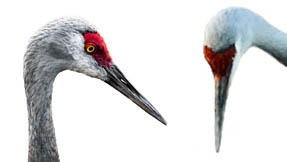
Display: The skin of the crown (forehead) is reddish and coated with tiny sparse black feathers that are barely visible. When the crane is calm and relaxed, the forehead is small and the red skin ends just behind the eye.
Function: Contracted crown indicates the crane is relaxed and not stressed.
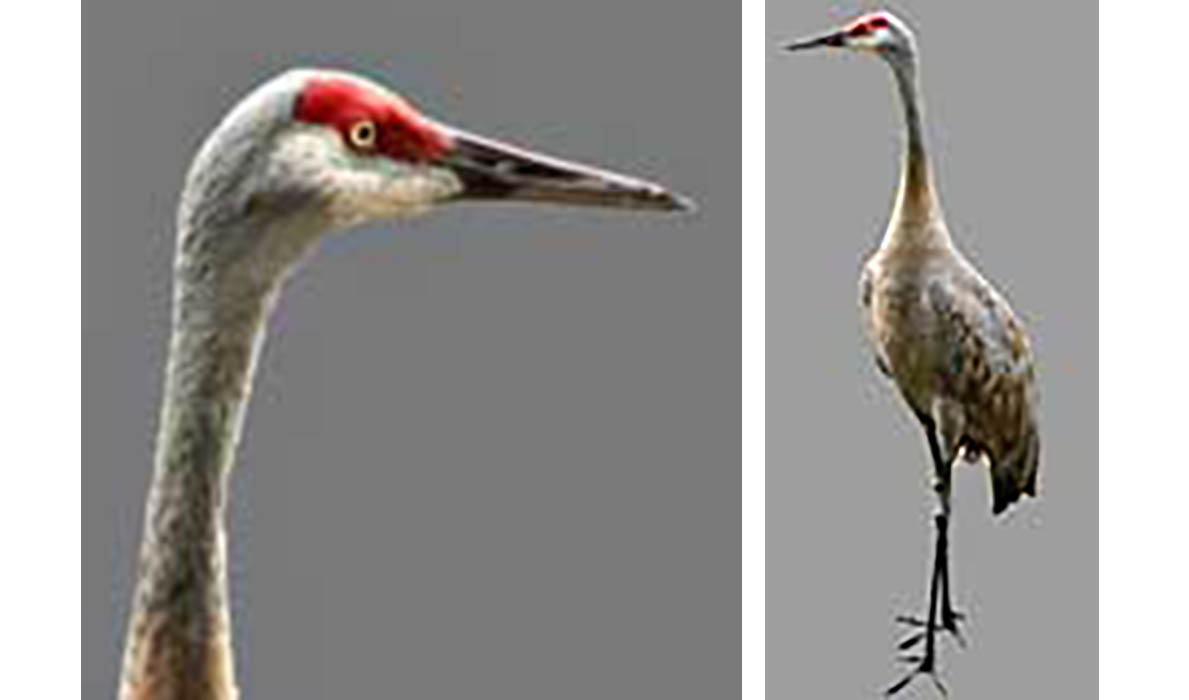
Display: Crane stands tall and still with head lifted high. The red skin of the crown is expanded and the tertiary feathers are raised with Crown-Expanded.
Function: Announces a potential threat. The bird may turn its bill away from the intruder to emphasize its red crown while watching through peripheral vision.
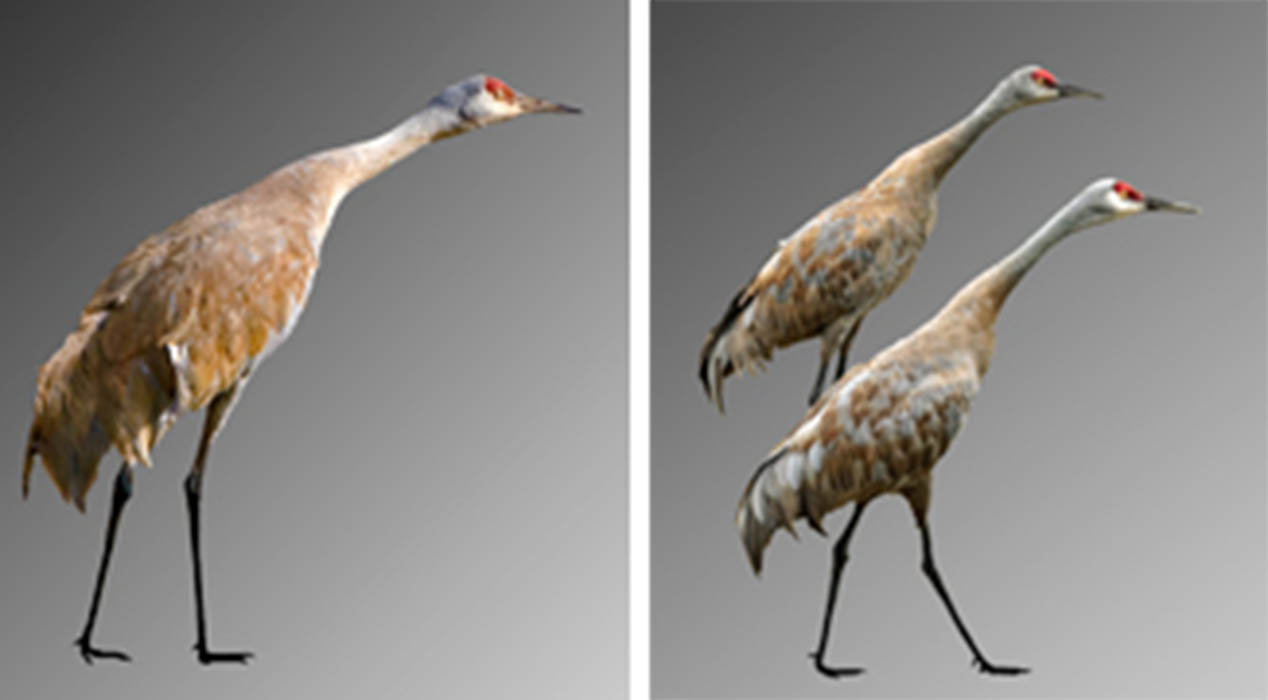
Display: Crane points in the direction it intends to fly and emits a soft purr. As lift-off becomes imminent, the head and neck become more horizontal and other cranes may join in.
Function: "Get ready, we're taking off in this direction." Groups of aligned cranes lift off simultaneosly.

Display: Cranes bathe by dippping into shallow water and shaking vigorously.
Bathing is frequent after a meat meal (vole, duckling...) and on dusty staging areas before and during migration.
Function: Grooming, cooling on hot days, dispelling biting insects. Among groups of cranes, bathing can be contagious and merge into jumps and ground-stabs in the shallow pond.

Display: The chin, crown and side of head are rubbed on back or wings. Individual feathers are isolated and meticulously combed from base to tip.
Function: Keeps feathers aligned and free of contaminants so that barbules hook together for optimal flight. Preening is socially contagious and may indicate low-arousal ambivalence.
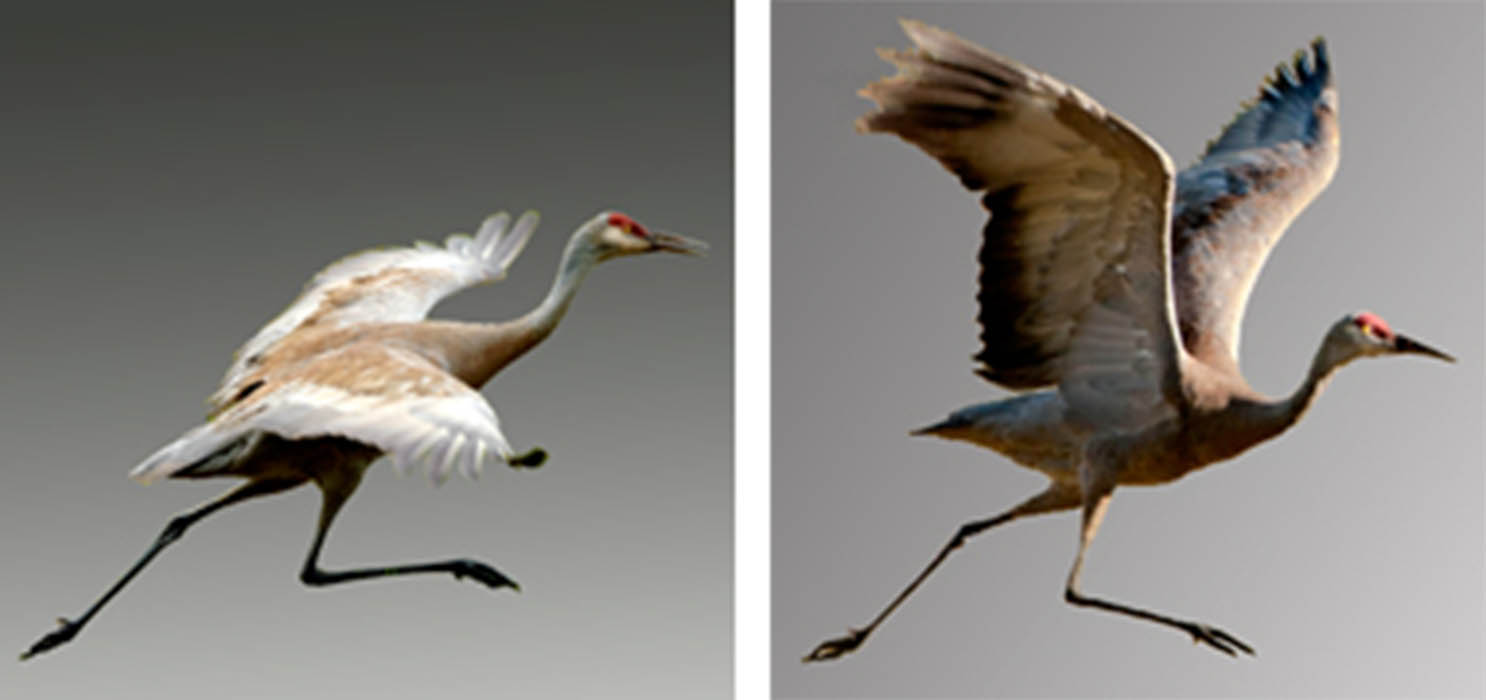
Display: The crane sprints forward, flapping its wings.
Function: Multipurpose. Used to threaten intruders, as part of dance sequence, and as a general expression of crane joy.Masatomi & Kitagawa term this display "High-head dashing"
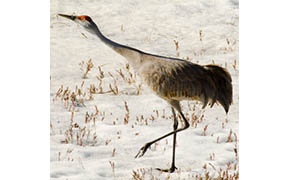
Display: Male tips his bill upward and extends his neck, waits a few seconds, and then paces forward with bustle-up and expanded crown.
Function: Coaxing the female to mate. We suspect that the male might be sniffing female pheromones.
We live on 40 acres of swampy taiga near Fairbanks, Alaska.
For 24 years, Christy Yuncker Happ has faithfully recorded the passing of the seasons in her written journals, still images, and videos.
George Happ is responsible for this website and the Alaska Sandhill Crane Blog.